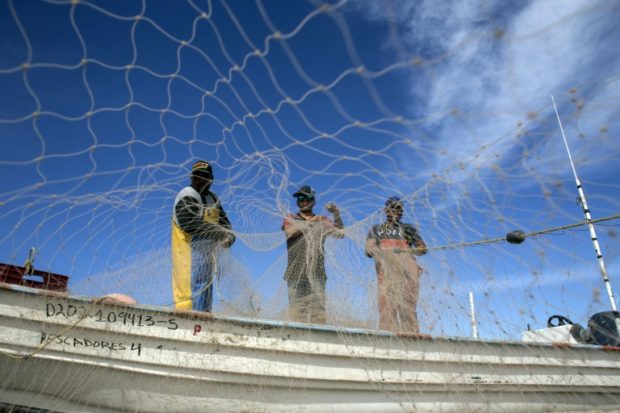
Fishermen prepare their nets in the Gulf of California. Image: AFP/Guillermo Arias
The United Nation’s World Heritage Committee has placed the Islands and Protected Areas of the Gulf of California on the organization’s list of sites in danger, due to the imminent extinction of the vaquita, a porpoise native to the area.
The site, which is comprised of 244 islands, islets and coastal areas in north-eastern Mexico, has been inscribed on the World Heritage List since 2005 in part for its vaquita population.
Back then, nearly 300 specimens of vaquita could be counted. Today, that number has shrunk dramatically to about 10.
The cause of their demise? Strangulation, after being caught as bycatch in gillnets or fishing nets used to illegally catch totoabas, a species of marine fish that can grow up to 220 pounds.
The region was inscribed for being a “natural laboratory” for vaquita populations, but also for being a microcosm of planetary phenomena: nearly all major oceanographic processes that occur in the planet’s oceans also take place in the area.
This distinction earned the site its nickname, “Aquarium of the World.”
The islands are home to 695 vascular plant species, more than any other marine or land site on the World Heritage List, as well as 891 fish species, 90 of which are native species.
Overall, the site is also home to 39% of the world’s marine mammal species, and a third of the world’s marine cetacean species.
The List of World Heritage in Danger is meant to raise the alarm on sites that face threats due to armed conflict, natural disasters, urbanization poaching and pollution.
The announcement was made at the 43rd session of the World Heritage Committee, which wraps up in Baku, Azerbaijan July 10. JB
RELATED STORIES:
Woman, 73, uses shovel to kill cobra slithering on her patio
LOOK: Boy from Ilocos Norte gets wish of goat as graduation gift